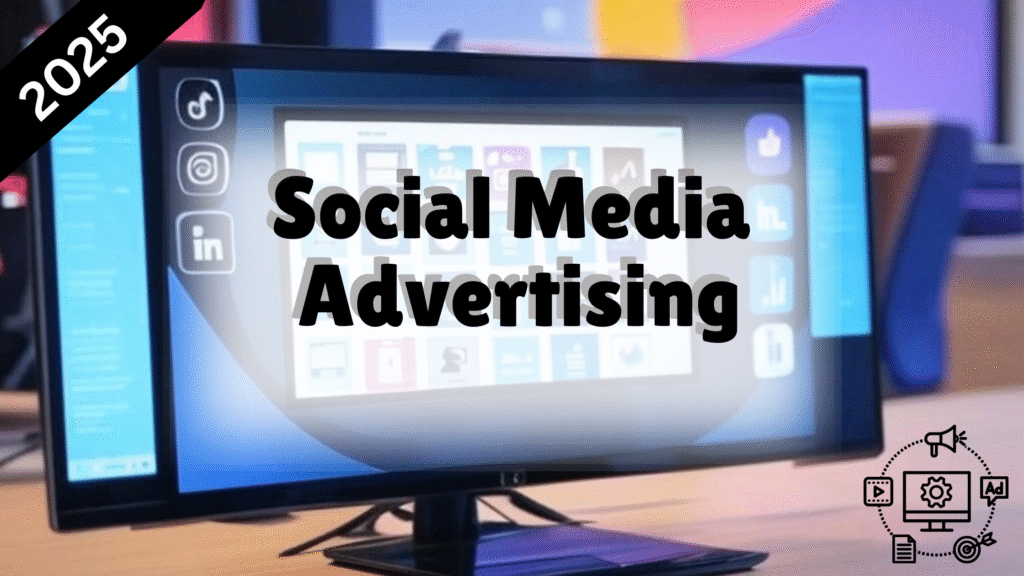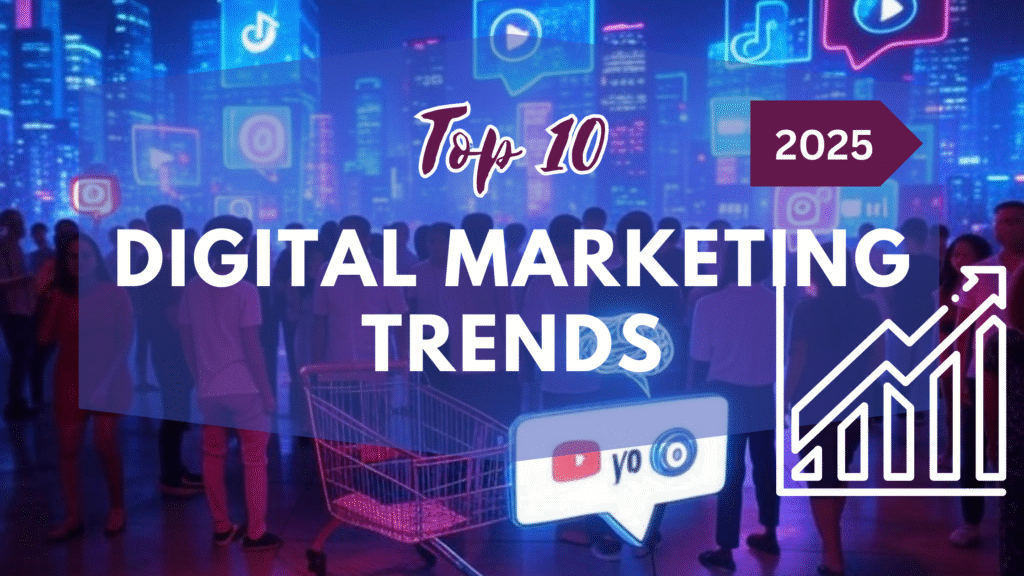Introduction
In 2025, social media advertising has become a cornerstone of digital marketing, commanding a significant share of ad budgets and driving unprecedented engagement. With platforms like TikTok, Instagram, and LinkedIn leading the charge, brands are leveraging video, interactive formats, and AI-driven targeting to connect with audiences. Social media ad spend is projected to account for 50% of total digital ad budgets, making it a critical focus for marketers (Exploding Topics). This guide explores why social media advertising matters, provides actionable strategies for success, and highlights best practices for 2025. Targeting high-searched keywords like “social media ads,” “video advertising,” “AI targeting,” and “ad transparency,” this blog equips marketers to excel in a dynamic ad landscape.
Why Social Media Advertising Matters
Social media advertising offers unparalleled reach and engagement, making it a vital strategy for brands in 2025. Key trends and statistics underscore its importance:
Social media ad spend is expected to reach 50% of total digital ad budgets in 2025, reflecting its growing dominance (Exploding Topics).
TikTok ad revenue has surged by 8,100% over the past five years, with searches for “TikTok ads” reflecting massive interest (Exploding Topics).
Video ads achieve 48% higher click-through rates (CTR) than static ads, with short-form videos on platforms like TikTok and Instagram leading the way (Search Engine Journal).
AI-driven targeting improves ad ROI by 30%, enabling precise audience segmentation and personalized content delivery (Search Engine Journal).
Transparency is crucial, as 70% of consumers demand clarity on data usage and ad sponsorships to maintain trust (Smart Insights).
Beyond engagement, social media ads drive conversions, with platforms offering shoppable features that streamline the buyer journey. This makes social media advertising a must for brands aiming to maximize impact.
Key Strategies for Social Media Advertising Success in 2025
To thrive in social media advertising, brands must adopt strategies that align with platform trends and audience expectations. Below are seven actionable approaches:
1. Prioritize Video Ad Formats
Video ads, especially short-form content under 60 seconds, dominate social media platforms like TikTok and Instagram Reels. They achieve 48% higher CTRs than static ads and are favored by algorithms for greater visibility (Search Engine Journal).
Why It Matters: Video ads capture attention quickly and drive engagement in a fast-scrolling environment.
Actionable Step: Create 15-30 second videos showcasing your product or a quick tutorial, and post on TikTok and Instagram Reels.
2. Leverage AI-Driven Targeting
AI tools enable precise audience segmentation by analyzing demographics, behavior, and interests. Platforms like Facebook and LinkedIn use AI to optimize ad delivery, ensuring your content reaches the right users at the right time.
Why It Matters: AI targeting boosts ROI by 30% through efficient ad spend and higher conversions (Search Engine Journal).
Actionable Step: Use Facebook Ads Manager or LinkedIn Campaign Manager to set up AI-driven targeting based on user data.
3. Experiment with Interactive Ad Formats
Interactive formats like polls, carousel ads, and augmented reality (AR) filters encourage user participation, increasing engagement. Instagram’s AR filters, for example, have been used in over 1 billion Stories (Exploding Topics).
Why It Matters: Interactive ads foster engagement and make your brand memorable.
Actionable Step: Create a branded AR filter on Instagram or a carousel ad on LinkedIn showcasing multiple products.
4. Focus on Transparency and Compliance
With 70% of consumers prioritizing transparency, brands must clearly disclose ad sponsorships (e.g., #ad) and data usage practices. Compliance with regulations like GDPR and CCPA is also essential to avoid penalties.
Why It Matters: Transparency builds trust, with 85% of users more likely to engage with ethical brands (Smart Insights).
Actionable Step: Use OneTrust to manage data consent and ensure all ads include proper disclosures.
5. Incorporate Shoppable Ad Features
Shoppable ads on platforms like Instagram and TikTok allow users to purchase products directly from the ad, reducing friction in the buying process. These features have driven a 25% increase in conversion rates for ecommerce brands (Exploding Topics).
Why It Matters: Shoppable ads streamline conversions, turning viewers into buyers instantly.
Actionable Step: Set up Instagram Shopping or TikTok’s in-app purchasing for your ads, and tag products directly in the content.
6. Optimize for Mobile Users
With 60% of social media traffic coming from mobile devices, ads must be mobile-optimized with fast-loading visuals and thumb-friendly designs (Smart Insights).
Why It Matters: Mobile optimization ensures a seamless user experience, reducing bounce rates.
Actionable Step: Test ad designs on mobile devices using Google’s Mobile-Friendly Test and optimize load times.
7. Track and Refine with Analytics
Analytics are crucial for measuring ad performance and optimizing campaigns. Platforms like TikTok Analytics and Instagram Insights provide data on impressions, CTRs, and conversions.
Why It Matters: Data-driven adjustments improve ad efficiency and ROI.
Actionable Step: Use Google Analytics with UTM parameters to track ad traffic and conversions, then refine based on insights.
Platform-Specific Strategies
Each platform offers unique ad opportunities. Here’s how to approach the top three in 2025:
TikTok
Audience: Gen Z and Millennials.
Strategy: Focus on short-form video ads (15-60 seconds) that align with trends or challenges. Use TikTok’s ad tools for precise targeting.
Example: A beauty brand might create a 15-second ad showing a quick makeup tutorial with a trending sound.
Audience: Millennials and Gen X.
Strategy: Use Reels and Stories for ads, leveraging shoppable features to drive sales. Experiment with carousel ads for product variety.
Example: A fashion brand could run a Reel ad showcasing a new collection, with tagged products for direct purchase.
Audience: Professionals and B2B.
Strategy: Use video ads or sponsored content to target decision-makers. Focus on thought leadership and case studies.
Example: A SaaS company might run a video ad highlighting a customer success story, targeting industry-specific professionals.
Table: Social Media Ad Metrics to Track
Metric | What It Measures | Tool to Use |
|---|---|---|
Impressions | Total ad views | TikTok Analytics, Instagram Insights |
Click-Through Rate | Percentage of clicks per view | Facebook Ads Manager |
Conversion Rate | Actions (e.g., sales) from ad | Google Analytics |
Engagement Rate | Likes, shares, comments | Platform analytics |
Cost Per Click | Ad spend per click | LinkedIn Campaign Manager |
Case Studies
Fenty Beauty’s TikTok Ads: Fenty Beauty’s TikTok campaign using short-form video ads reached 40 million users, driving a 20% sales increase (Exploding Topics).
HubSpot’s LinkedIn Strategy: HubSpot’s LinkedIn video ads targeting B2B audiences achieved a 15% higher conversion rate (Smart Insights).
Challenges and Considerations
Social media advertising presents challenges:
Ad Fatigue: Users may ignore repetitive ads; vary creative formats to maintain interest.
Rising Costs: Increased competition drives up ad costs; start with small budgets and scale based on performance.
Regulatory Compliance: Adherence to data privacy laws is critical to avoid fines.
Address these by diversifying ad formats, testing cost-effective strategies, and ensuring compliance with tools like OneTrust.
Conclusion
Winning with social media advertising in 2025 requires a strategic focus on video ads, AI-driven targeting, and transparency. By leveraging interactive formats, optimizing for mobile, and tracking performance, brands can maximize engagement and ROI. Start by selecting the right platforms, experimenting with ad types, and using analytics to refine campaigns. With these strategies, you’re well-positioned to succeed in the evolving social media ad landscape.


